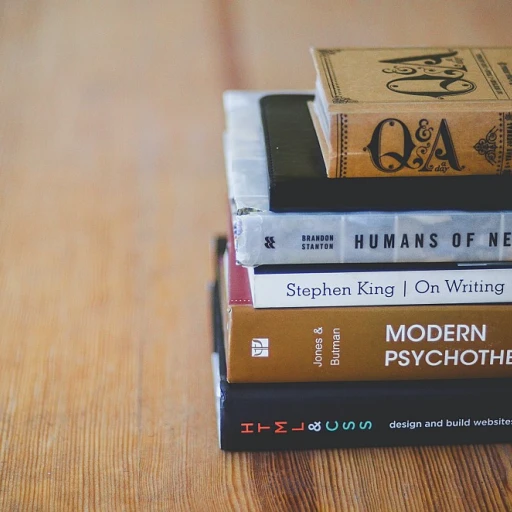The Intersection of Human Psychology and Market Forces
Peering into the Psychology of Markets
At the core of every market, beating like a heart, are the decisions of humans. Each choice, whether it's made by an individual or a corporation, interlocks to craft the vibrant tapestry of economic activity we observe. Behavioral economics, a field where the meandering pathways of human psychology intersect with the steely logic of market forces, brings a new understanding to this intricate dance. This realm isn't just about numbers and charts; it's about the human element – the emotional, cognitive, and social factors that influence the economic behavior of individuals and groups.
Seeing Through The Economic Lens
Behavioral economic theory punctuates the idea that not all decisions are made strictly on a cost-benefit analysis. As it turns out, the price tag isn't the sole driver of choice. People's decisions are colored by a variety of psychological factors, such as past experiences, biases, and social pressures. Understanding these subtler aspects is key to unlocking consumer behavior and steering market strategy in a direction that aligns with human tendencies.
The Symphony of Behavioral Nuances
It's essential to see the symphony rather than just the individual instruments when considering how economic actions unfold. Behavioral economics teaches us to listen for the underlying melody – the recurring patterns of behavior that shape market outcomes. Richard Thaler and Daniel Kahneman, both Nobel laureates, have illuminated the profound impacts of cognitive biases and heuristics on decision making. Their work on bounded rationality and loss aversion, for example, provides insight into why consumers might irrationally cling to the status quo or fear losses more intensely than they desire gains.
Human Behavior at the Market's Helm
Market dynamics often boil down to the aggregated decisions of individuals, each guided by personal experience, cognitive biases, and emotional responses. Behavioral economists like Thaler and Kahneman suggest that human behavior doesn't always align with the rational agent model traditionally held in economic theory. Instead, people can be predictably irrational, allowing for more nuanced strategies that focus on behavior change and decision making that traditional models might overlook.
Decisions Under Uncertainty: Insights from Prospect Theory
The Essential Tenets of Prospect Theory
Pioneered by Daniel Kahneman and Amos Tversky, Prospect Theory shifted our understanding of decision making, emphasizing that people don't always act in their best financial interest. Studies supporting the theory showed that losses loom larger than gains, demonstrating that individuals are loss-averse. In response, companies now devise strategies that minimize perceived losses to entice consumers. Incorporating tenets from Prospect Theory, strategies might include offering free trials or money-back guarantees, thus reducing the psychological impact of loss.
Prospect Theory in Action: Behavioral Economics at Play
Picture this: a shopper deciding between two brands. Prospect Theory suggests that if one brand offers a bonus item and the other a price cut, several will choose the bonus despite identical economic benefit. This observation has vast implications on how companies craft their offers and market their products to appeal directly to consumers' psychological preferences.
Understanding Decision-Making Through Behavioral Economics
Behavioral economics doesn't just outline problems; it provides solutions on steering decisions. This is done through analyzing decision making process which diverges from traditional economic theory that considers people as fully rational actors. By understanding the intrinsic cognitive biases as detailed by Kahneman and Tversky, businesses develop interventions or 'nudges' to guide consumer and employee choices in a way that's mutually beneficial.
The Influence of Prospect Theory on Market Economics
Prospect Theory has been pivotal in explaining market anomalies that challenge the efficient market hypothesis. Instances where stock market behaviors deviate from what traditional models predict can often be illuminated by behavioral economics. Notably, Richard Thaler’s contribution to the field offers insights into how stock market trends may be influenced by psychological elements rather than just economic fundamentals.
Strategic Integration of Prospect Theory in Decision Making
Knowing that a person's subjective experience of value can lead decision making means that businesses tailor their strategies accordingly. For example, emphasizing the potential positive outcomes of an investment rather than negatively framed statistics can lead to a more favorable investor response due to their inherent risk aversion. Data from the American Economic Review and the Quarterly Journal of Economics support this behavior, highlighting the importance of framing in financial decisions.
Prospect Theory’s Applications in Financial and Social Contexts
Does Prospect Theory only apply in the financial sphere? Far from it. It's incredibly relevant in social settings as well. For instance, understanding that people work harder to avoid losing $100 than they do to gain $100 has been instrumental in shaping strategies that address behavior change in health and education. These insights, underpinned by solid research, show that by recognizing the human element of behavior, strategies can be crafted to achieve desired outcomes in a wide range of contexts.
Nudging Towards Better Choices: The Power of Indirect Influence
Nudging into Smarter Decision Making
Imagine a world where subtle tweaks to the environment guide people to make better decisions. That's the essence of nudging, a concept rooted in behavioral economics and infused with the reality of human behavior. Rather than mandating rules, a gentle push in the right direction can be more effective. Think of the classic example where painting a fly in the urinals at Amsterdam's airport reduced spillage by 80%, a nudge towards cleaner public bathrooms.
Bridging the Gap: From Theory to Practice
In the bustling whirl of market dynamics, businesses are tuning into how behavioral insights can shape economic strategies. A nudge isn't just a nudge—it's a carefully laid plan. Let's consider Richard Thaler's insight from 'Nudge: Improving Decisions About Health, Wealth, and Happiness'. His work, alongside Cass Sunstein, shows that by understanding the 'choice architecture,' companies can foster better decision-making for consumers and employees alike. One case in point is a study discussed in the Journal of Economic Perspectives, showcasing how default options in retirement savings plans dramatically increase participation rates, helping employees to save more over time.
The Enigma of Choice Architecture
Delving deeper into the realm of choice, the maze of human decisions becomes apparent. For example, behavioral economics reveals that people are more likely to select fruit over chocolate when the fruit is at eye level—something grocery stores are well aware of. Likewise, in the digital space, software companies often use default settings to steer users toward sharing more data, leveraging our inherent aversion to loss and desire for convenience.
Optimizing Outcomes Through Indirect Routes
The journey of integrating behavioral economics into company strategy often involves indirect pathways. This means designing products and processes in a way that aligns with how people naturally think and act. With the knowledge that humans often stick to the status quo, a company might make its greener options the default, as reported in the American Economic Review, nudging customers towards more sustainable choices without them even noticing.
Social Proof as a Behavioral Catalyst
Social dynamics play a crucial role in our choices. Drawing on wisdom from the field, like insights from Daniel Kahneman’s and Amos Tversky's work on Prospect Theory, entrepreneurs recognize the power of social proof. It's not just about individual decision making; it's also how those decisions are influenced by the behaviors of others. A study in the Quarterly Journal of Economics illustrates how individuals are more likely to adopt solar panels when they see neighbors doing the same, leveraging the behavior change principles of influence and conformity.
By understanding these subtleties, strategies gain an edge. To see this transformative approach in action check this out. In this competitive market, those who comprehend and apply the nuances of behavioral economics are the ones who will wield the power to shift patterns, drive decision-making, and ultimately succeed in the modern economy.
When Emotions Trump Logic: The Impact of Sentiment in Economics
Emotional Dynamics Driving Market Movements
The ancient adage that humans are 'rational beings' has undergone a substantial reassessment thanks to the field of behavioral economics. At the intersection where emotions intersect with the logical labyrinth of economic decisions, behavioral economics reveals a captivating truth. People often make financial choices based on their emotional states, rather than solely on a rational evaluation of available information. This paradigm shift offers a broader lens through which we can understand market dynamics.
Unpacking Sentiment-Driven Economic Behavior
Behavioral economics sheds light on the powerful influence of sentiment on economic theory. For instance, a spike in investor optimism can inflate stock prices beyond their intrinsic values, which behavioral economists like Daniel Kahneman and Amos Tversky have linked to phenomena such as the 'hot-hand fallacy' in their research. The sway of public mood on the stock market highlights how sentiment can concern stakeholders and strategists alike as it governs the ebb and flow of economic confidence and, subsequently, market stability.
Prospect Theory: A Framework for Understanding Emotional Decision Making
Building upon the Prospect Theory, devised by Kahneman and Tversky, we see that individuals are often disproportionately influenced by the fear of potential losses over the allure of equivalent gains—this is known as loss aversion. Such behavioral insights illuminate why during times of economic downturn, the instinctive pullback in investment or consumption might be a reflection of deeper psychological underpinnings rather than a measured, data-informed strategy.
Social Sentiments and Their Impact on Consumer Choices
In a world constantly shaped by social decisions and behavior change, the knowledge that public sentiment can sway individual decision-making is pivotal. Marketing campaigns tailored to evoke an emotional response, such as happiness or nostalgia, can significantly affect consumer choice and spending, as seen in the groundbreaking studies published in journals such as the Journal of Economic Perspectives. These behavioral economic tactics leverage social influence to adjust consumer behavior—subtly guiding the masses toward desired economic outcomes.
The Sentimental Trader: Emotional Analysis in the Financial Sector
Financial strategists who integrate behavioral finance theories into their analyses consider not just market fundamentals but also the mood swings of the trading floor. Notable figures like Richard Thaler point to real-world examples where emotional reactions to market events led to surges or dips that traditional economic models failed to predict. Leading institutions now employ sentiment analysis tools to gauge the market temperature, recognizing that human behavior can often be the most important indicator of impending change.
Practical Applications: Nudging Towards Rationality in an Emotional World
Despite the weighty role of sentiment, strategies like the 'nudge', as popularized by Richard H. Thaler and Cass Sunstein, offer frameworks for companies to gently steer consumers toward more rational choices without stripping away agency. These strategies, which are grounded in behavioral economics, have seen successful application in various sectors, encouraging choices that benefit both individual welfare and economic efficiency.
Behavioral Economics in Pricing Strategies: Beyond Traditional Economics
Decoding the Behavioral Blueprint in Pricing
At the heart of every business transaction lies the critical element of pricing. Moving beyond the rigid frameworks of traditional economic theory, behavioral economics offers a fresh lens through which companies can understand how people actually make decisions. Insights drawn from this field are shattering the myth of the 'rational consumer' and are shaping how firms set and adjust their pricing strategies.
Behavioral economists like Daniel Kahneman and Amos Tversky have pioneered the understanding that people do not always act in financially rational ways. Their work, particularly Kahneman's Thinking, Fast and Slow, provides critical groundwork. The significance of mental shortcuts and emotional responses that drive purchasing behaviors is undeniable, and businesses that integrate these insights into their pricing models can often capture the market more effectively.
Price Anchoring and Consumer Perception
Price anchoring, the tendency of consumers to rely heavily on the first piece of information offered (the "anchor") when making decisions, is a concept well explored in the field of behavioral economics. Richard Thaler, another luminary in the field and author of Nudge: Improving Decisions About Health, Wealth, and Happiness, has shown through various studies and examples how initial prices set a mental benchmark for consumers. By strategically setting an anchor price, companies can nudge customer expectations and perceived value, potentially increasing willingness to pay.
The Role of Fairness and Reciprocity
A fascinating aspect of behavioral economics is understanding how notions of fairness and reciprocity influence the willingness to pay a certain price. Scholars like Dan Ariely have published extensive work evidencing that people are more likely to engage in a transaction they perceive as fair. Moreover, studies from the Journal of Economic Perspectives suggest that pricing strategies which incorporate a sense of fairness can lead to better customer loyalty and long-term profitability.
Psychological Pricing: When Cents Make Sense
Let's talk about that familiar '.99' pricing. It's not there by accident, but rather a direct application of behavioral economics. Behavioral economists have found that these psychological pricing strategies can play tricks on our brain, making an item appear cheaper than it is—a use case of how businesses tap into consumer psychology to boost sales. This tactic, largely built upon the concept of mental accounting, reinforced by Thaler’s work, encourages consumer spending by minimizing the pain of paying.
Dynamic Pricing and Real-Time Reactions
In the realm of stock market behavior, behavioral finance takes center stage where traders’ psychological biases frequently influence market prices. Translating this to a retail perspective, the concept of dynamic pricing—adjusting prices based on current market demands—capitalizes on humans' time-specific behaviors and urgency. According to the American Economic Review, incorporating real-time data on consumer habits and competitor pricing enables businesses to optimize profits and market positioning while acknowledging the fluidities of behavioral patterns.
Case in Point: Behavioral Economics at Play
For instance, a major online retailer might alter the cost of goods depending on the time of day, customer browsing patterns, and purchase history—real-world applications of theories such as bounded rationality and loss aversion. The immediate feedback of seeing a price rise or fall can trigger decision processes in consumers that deviate from the 'rational' paths predicted by classical economic theory and spur them into action—a prime behavioral economics behavioral strategy.
The Role of Cognitive Biases in Shaping Consumer and Investment Behavior
The Impact of Cognitive Biases on Consumer Choices
Understanding how cognitive biases influence decision-making is a linchpin in behavioral economics. These mental shortcuts and heuristics affect every choice, including those made by consumers. For instance, the status quo bias – a preference for the current state of affairs – can keep customers loyal to a brand despite new options. Daniel Kahneman and Amos Tversky first articulated these ideas, notably in their Prospect Theory, which shed light on how people make decisions under risk.
Behavioral Economics at Work in the Investment Sphere
Investment behavior is also deeply intertwined with cognitive biases. The anchoring effect, where initial exposure to a number sets a mental benchmark for all subsequent evaluation, can affect stock market prices. Studies, such as those published in the Journal of Economic Perspectives, demonstrate that investors often irrationally cling to the first price at which they bought a stock, influencing their future sell or hold decisions. The renowned work of Richard Thaler, particularly in Mental Accounting, helps us understand why people treat money differently depending on subjective criteria, such as source or intended use, often leading to suboptimal investment strategies.
Consumer Behavior's Ripple Effect on Market Dynamics
Further exploring the subject, behavioral economics also studies how groups' behavior affects market dynamics. Richard H. Thaler's concept of 'nudges' suggests subtle cues can steer people towards more rational economic decisions without stripping away choice, as seen in his influential book, Nudge: Improving Decisions About Health, Wealth, and Happiness. This is complemented by research on bounded rationality from Herbert Simon, indicating that humans make decisions within the limits of their available information and cognitive capacity, influencing everything from marketing strategies to pricing models.
Leveraging Mental Accounting for Business Strategy
The Practicality of Mental Accounting in Strategic Decision-Making
At the core of behavioral economics lies an understanding of how people perceive and categorize money, a concept known as mental accounting. Nobel Laureate Richard H. Thaler, a pioneer in the field, illuminated how this cognitive process impacts consumer behavior. For instance, a survey by the Journal of Economic Perspectives highlighted that people often divide money into separate accounts based on subjective criteria. This can include separating spending money from bill money, even if it all comes from the same source. Companies can harness this behavioral insight by structuring product pricing and savings in a way that resonates with the natural tendencies of mental accounting.
Incorporating Behavioral Nuances into Budget Planning
Decision-makers in businesses can tap into mental accounting to shape budget strategies. When they acknowledge that employees and departments often designate funds for specific purposes, they create a more effective allocation of resources. For example, allowing for discretionary budgets within departments aligns with the mental accounting habits of employees, leading to increased satisfaction and potentially, better financial outcomes. Clinical studies in the Journal of Political Economy present cases where such strategic moves have improved compliance with budget limitations.
Oversight and Leverage with Mental Ledger Tweaks
Behavioral economics suggests that the way financial information is framed can significantly alter individuals' choices and behaviors. By adjusting the 'mental ledgers,' businesses can guide decision-making and shape consumer habits. A study on loss aversion published by the American Economic Review reveals that consumers are more likely to purchase goods when they feel like they are avoiding a loss versus making a gain. Implementing this knowledge, companies can nudge consumers towards picking higher-margin items by framing discounts and offers in a loss aversion context.
Consumer Segmentation through Behavioral Lenses
Segmentation strategies gain depth when the idiosyncrasies of behavioral economics are involved. The field splits people not only by demographic features but also by behavioral traits, many of which are rooted in mental accounting practices. Take, for instance, a study from the Quarterly Journal of Economics showing that certain customers prefer flat rates to potentially cheaper a la carte services due to the mental convenience. Companies adept in behavioral economic theory can tailor their strategies to such preferences, thereby enhancing customer satisfaction and loyalty.
Optimizing Rewards and Loyalty Programs with Behavioral Economics
Research has demonstrated time and again that well-crafted rewards programs can significantly influence customer behavior. When organizations understand the principles of mental accounting, as laid out in publications like the Journal of Risk and Uncertainty, they can optimize reward structures. For example, points or credits feel like 'winning' to the consumer and can be perceived as separate from cash counterparts. This separation can lead to increased spending, as customers place a different value on rewards than they do on cash.
Case Studies: Successful Implementation of Behavioral Economics in Companies
Real-World Wins: Turning Theory into Transformation
When boardroom deliberations turn to strategy, it's the savvy application of behavioral economics that can steer a company towards success. Firms that blend smart analytics with an understanding of human behavior craft policies that not only resonate with their customer base but also create strong market advantages.
One classic example is the retirement savings industry. Companies like Vanguard have leveraged insights from behavioral economics to design default enrollment in retirement saving plans, a move that dramatically improves employee participation rates. By reducing the friction in the decision-making process, they nudge employees towards securing their future financially without overwhelming them with complex choices.
Another prime case study is the use of loyalty programs and dynamic pricing in the airline industry. By understanding customer sensitivity to price and perceived value, companies have optimized rewards programs to maximize customer retention and spending. Pricing models often employ a behavioral economics approach, offering personalized prices based on previous buying behavior, potentially increasing company revenues.
Behavioral Insights Spark Innovation in Tech Giants
Contemporary mavens of the tech world, like Google and Apple, are no strangers to the subtle yet compelling pull of behavioral economic strategies. For instance, Google's famous '20% time'—allowing employees to dedicate one day a week to any project they are passionate about—is an ingenious twist on encouraging creative thinking, a cornerstone of innovation, by using mental accounting principles to separate this time as a distinct 'account' for creativity.
Apple's minimalist product design also speaks volumes, a real-life application of the 'less-is-more' philosophy. This approach not only simplifies the decision-making for customers but also adds a premium feel to the product, which drives up the perceived value and thus, price customers are willing to pay.
Financial Institutions Capitalize on Cognitive Biases
Financial behemoths tap into our loss aversion bias confidently. Take for instance, the rise of 'no-negative-equity guarantees' in reverse mortgages, ensuring that borrowers will not owe more than their home is worth. This powerful promise targets our innate fear of loss and has bolstered product attractiveness considerably.
Behavioral tactics in the stock market are no less prevalent. Studies suggest that investors are prone to the sunk cost fallacy, holding onto losing stocks for too long, and status quo bias, keeping portfolios static despite changing market dynamics. Investment firms that educate clients on these biases can guide them towards more rational, profitable decisions rather than relying on gut feeling or flawed heuristics.
To close, the examples demonstrate that understanding consumer and investor psychology can lead to strategies that work with, rather than against, human inclinations. The blend of economic theory with psychological insights not only makes for a potent mix but propels businesses toward innovative solutions that stand the test of changing markets and behaviors.














